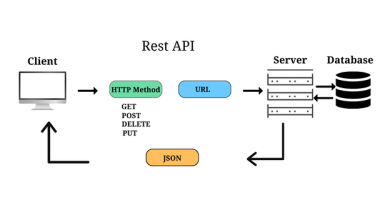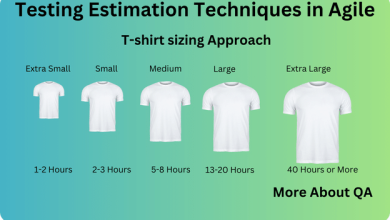Before talking about the QA plan, we need to understand some basic concepts, which include
QA Matrix
A tool used for mapping project requirements for QA activities and deliverables is called a QA matrix. It is useful for:
- To track the progress and status of the QA tasks.
- To document the results and feedback.
QA Metrics
QA metrics are numerical measurements that show how well a QA process is working or how high a product or service is in terms of quality. It facilitates:
- To evaluate the effectiveness and efficiency of the QA activities.
QA Checklist
A quality assurance checklist is a tool that describes the precise requirements or actions that must be completed or validated for a quality assurance task or output. It helps with:
- To ensure that nothing is missed or overlooked.
- To verify quality standards and expectations are met.
The Quality Policy sets a consistent commitment to quality across the organization, while project-specific QA plans tailor detailed methodologies for each project’s unique needs.
QA (Quality Assurance) is the overarching process of ensuring quality, often guided by a Quality Policy.
A QA plan is a project-specific document detailing strategies and activities for quality management within that project.
Testing process: Systematically checks software against requirements, vital for delivering reliable and high-quality products.
An SQA Plan plays a vital role in ensuring that software development processes are organized, regulated, and capable of reliably generating high-quality software products.
A QA plan is a document that outlines the QA methodology, roles and responsibilities, resources, schedule, deliverables, and metrics for a project. Also, it describes the quality assurance processes, standards, guidelines, and tools that are used to monitor, measure, control, and improve the quality of the project outputs.
In short, the QA plan is a roadmap for organizing software development, ensuring it aligns with project goals and industry standards.
Objective
Understand the project goals and requirements. Begin by comprehending the project requirements, including goals, deliverables, specifications, features, and functions. Identify applicable quality criteria, standards, and regulations.
This aids in setting quality objectives, managing expectations, and assessing potential risks and challenges.
Activities
- Review the project requirements and specifications.
- Identify critical features, functionalities, and potential risks.
- Assess compatibility with established SQA standards.
Define QA Roles and Responsibilities
Clearly define roles and responsibilities within the QA team for the application like QA manager, QA lead, QA analysts, testers, developers, and stakeholders.
Define tasks, activities, and deliverables for each role, along with communication and reporting channels. This ensures accountability, authority, and smooth coordination among project members.
Activities:
- Identify key QA team members responsible for testing, documentation, and defect tracking.
- Define roles in adherence to established SQA standards.
Selection of QA Methods and Tools
Choose effective methods and tools for comprehensive testing of the application. Consider factors like project type, size, complexity, duration, resources, and budget.
Choose QA techniques such as reviews, inspections, audits, testing, and monitoring to verify and validate project quality.
Also, select QA tools like software, hardware, frameworks, and platforms to support and automate QA processes.
Activities
- Evaluate testing methods suitable for unit, integration, system, and user acceptance testing.
- Select appropriate testing tools, considering automation, performance, and security testing.
Plan the QA Activities and Schedule
Plan and organize QA activities to align with project timelines for the application. such as quality planning, quality control, quality assurance, and quality improvement in the project.
Make sure to match up the QA activities and schedule with project milestones, deliverables, and feedback from stakeholders and customers.
This ensures that QA activities are done on time, are efficient, and effective, and meet quality objectives and expectations.
Activities
- Develop a detailed schedule for testing phases, including milestones and deadlines.
- Define criteria for task planning, completion, and archival testing.
- Allocate resources effectively to ensure timely completion of QA activities.
Document the QA Plan
This phase includes key information like project overview, quality objectives, QA roles and responsibilities, methods and tools, activities and schedules, metrics, risks, mitigation strategies, and report templates.
This ensures effective communication with project members and stakeholders and facilitates monitoring and evaluation of QA performance and results.
Activities
- Document test cases, procedures, and expected outcomes.
- Specify testing environments, configurations, and data sets.
- Include sections for purpose, references, configuration and management, problem reporting, corrective actions, tools, code controls, and testing methodology.
Review and update the QA Plan
Revise and update the QA plan for the project by considering feedback, changes, and lessons learned from QA activities. Involve project members and stakeholders in this review process, seeking their approval. This ensures the QA plan stays relevant, accurate, and up to date, reflecting the project’s quality status and addressing any issues.
Activities
- Regularly review the QA plan to identify areas for improvement.
- Collect feedback from QA team members and stakeholders.
- Incorporate lessons learned from the testing phases of the application.
Other Considerations
- Continuous Learning: Encourage ongoing skill development within the QA team.
- Collaboration: Foster open communication between development and QA teams for seamless integration.
- Adaptability: Be prepared to adapt the QA plan based on changing project requirements.
- Monitoring and Reporting: Implement mechanisms for real-time monitoring and reporting of QA progress for the application.
- Client Engagement: Involve end-users in the testing process through feedback sessions and user acceptance testing.
Key Points
In simple words QA plan typically includes:
- Objectives – Specific goals to adhere to the Quality policy of the organization.
- Scope – The scope of the QA activities.
- Roles and Responsibilities of the QA team members.
- Testing strategies and methodologies to assess the product’s quality.
- Creating a timeline and defining milestones for various testing phases.
- Defect Management: Articulating the procedure to identify, monitor, and address defects.
- Documentation: Specifying the documentation criteria for test cases, test scripts, and test reports.
- Communication: Describing communication channels and reporting frequency.
- Training: Recognizing the training requirements for QA team members.
- Review and Approval: Instituting a process for stakeholders to review and approve the QA plan.
Conclusion
This Software Quality Assurance (SQA) plan for the web-based task planning application is designed to ensure the delivery of a high-quality, reliable, and user-friendly product. By adhering to established SQA standards and considering additional factors specific to the application, we aim to achieve excellence in both development and user satisfaction.
Practical Example
Let’s assume we have the following requirements for a web application, and being test manager I am responsible for creating a Software quality assurance plan for the project.
Project Requirements
“I require a straightforward web-based application accessible through a private link. The homepage should allow me to plan tasks by entering details such as task title, project, and description. The tasks will persist indefinitely, but at the end of each day, I can mark them as completed. Uncompleted tasks will either be archived for potential deletion or moved to a backlog for future planning.”
Web-Based Task Planning Application – Project-Specific QA Plan
Ensure the Quality of a Web-Based Task Planning Application and make sure that the requirements are fulfilled.
Project Overview
Develop a straightforward web-based task planning application accessible through a private link.
Key Features: Task title, project, description; persistence of tasks; daily completion marking; archiving or backlog for uncompleted tasks.
QA Roles and Responsibilities
- QA Manager: Overall responsibility for QA strategy and coordination.
- QA Lead: Direct oversight of QA activities, ensuring alignment with project goals.
- QA Analysts/Testers: Execute testing processes, including unit, integration, system, and user acceptance testing.
Developers: Collaborate with the QA team to address identified issues.
Stakeholders: Provide feedback and participate in user acceptance testing.
Software Testing Methods and Tools
Testing Methods: Comprehensive testing, including unit testing for individual components, integration testing for combined functionalities, system testing for overall application behavior, and user acceptance testing for end-user validation.
Testing Tools: Utilize appropriate tools for automation, performance, and security testing.
QA Activities and Schedule
Develop a detailed schedule aligned with project milestones:
- Task planning phase.
- Daily completion marking.
- Archiving and backlog management.
- Define criteria for task planning, completion, and archival testing.
- Allocate resources effectively for timely QA completion.
QA Documentation
Document test cases, procedures, and expected outcomes.
- Specify testing environments, configurations, and data sets.
- Include sections for purpose, references, configuration and management, problem reporting, corrective actions, tools, code controls, and testing methodology.
QA Plan Review and Update
- Regularly review the QA plan to identify areas for improvement.
- Collect feedback from QA team members and stakeholders.
- Incorporate lessons learned from testing phases, ensuring ongoing relevance.



